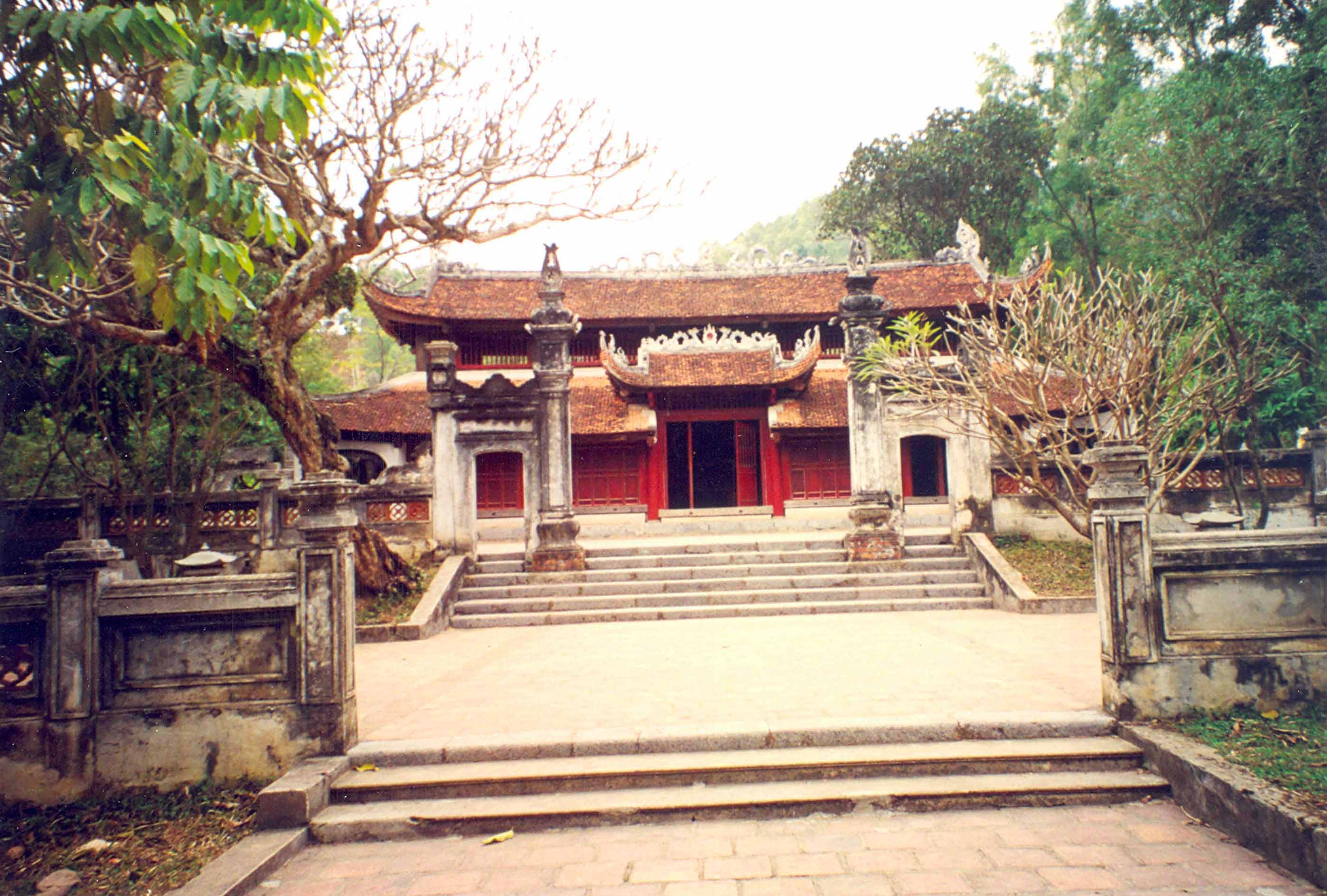
Located in Phu Dong Village, Gia Lam District, Hanoi, Phu Dong Temple (also known as Giong Temple) is the place to worship a Vietnamese National Hero – Saint Phu Dong Thien Vuong, who is a character in Vietnamese legend, one of the four saints that the people call the immortal four in Vietnamese folk beliefs. He is considered as a symbol of spirit against foreign aggression and youth power. This temple is a unique monument complex and a tourist destination that attract various domestic and foreign tourist of Vietnam Package Tour.
History
The Temple was built by King Hung Vuong VI and restored by King Ly Thai To, the founder of the Ly dynasty.Phu Dong Temple which is also known as Thuong Temple was built on the old house of Saint Giong.
According to the legend, in the village of Phu Dong, there were an old childless spouse. One day, the wife went out to work at the paddy field and found giant footprints. She put her feet on it and got pregnant after that she gave birth to a boy whose name was Giong. Giong couldn’t speak when he was 3 years old until King Hung Vuong 6th send a royal announcement around the kingdom to find talented people, who could fight the invaders from the north, he suddenly could speak. He requested the messenger to inform the King he would need a steel horse, a steel stick and a steel armor to fight off the enemy. The whole villagers had to contribute food to feed Giong. He ate a lot and grew bigger and bigger. The invaders were approaching the capital city, Giong killed myriad invaders one group after another and kept on fighting till no invaders were left alive. After that Giong rode his horse to the summit of Soc Son Mountain (north of Hanoi now) where he left behind the armor and flew into the blue sky. King Hung Vuong VI built a temple for him in Phu Dong Village to commemorate the great work of Saint Giong.
In 1010 when leaving the capital to Thang Long, Ly Thai To has set up, the temple has been restored many times. Previously, the shrine was only a small temple named Dong Thien Vuong and Non Nuoc Pagoda located next to it. During the reign of King Le Dai Hanh, when he went to fight the enemy Tong and asked St. Giong help. His request was witnessed and after the war, the King decided to rebuild the temple and named it Phu Dong Thien Vuong as the current name.
Structure
The temple covers an area of 247 hectares, including 4 main areas. The public service area (72.7 hectares) includes clusters of entertainment facilities, villas, cultural services with small beaches and water sports. The ecological cultural tourism area (81.8 ha) consists of hills, mountains and natural lakes, which are organized into works of ethnic minorities in Vietnam. The service area (52 hectares) includes all markets, supermarkets, parking lots, low-rise guesthouses, etc. The conservation area (65 hectares) is a green area with historical relics such as Soc Temple, Non Nuoc Pagoda which is one of the Best destination in Vietnam.
Traditional Festival
Phu Dong Temple Festival has held annually on the 9th of Abril lunar month.The villagers organize a solemn procession and play the scenes of the battles that Saint Giong fought earlier in the festival. In addition, after the sacred activities of honor and remember St.Giong, the festival continues with various traditional unique games such as tug of war, duck catching, bag jumping, blind man’s buff and traditional martial arts performances. These games take place in the joyful atmosphere that attracts many visitors to Vietnam Private Tour to participate.
Join Vietnam Tourist Information now to have an enjoyable and memorable trip to Phu Dong Temple.
Additional, To enjoy the most beautiful sightseeings in Vietnam by your eyes, you can see some itineraries below Halong Bay Cruises – Hanoi Tour – Vietnam Tours – Sapa Tours – Package Tours or book a private car to discover where ever you want to enjoy the Vietnamese taste.
